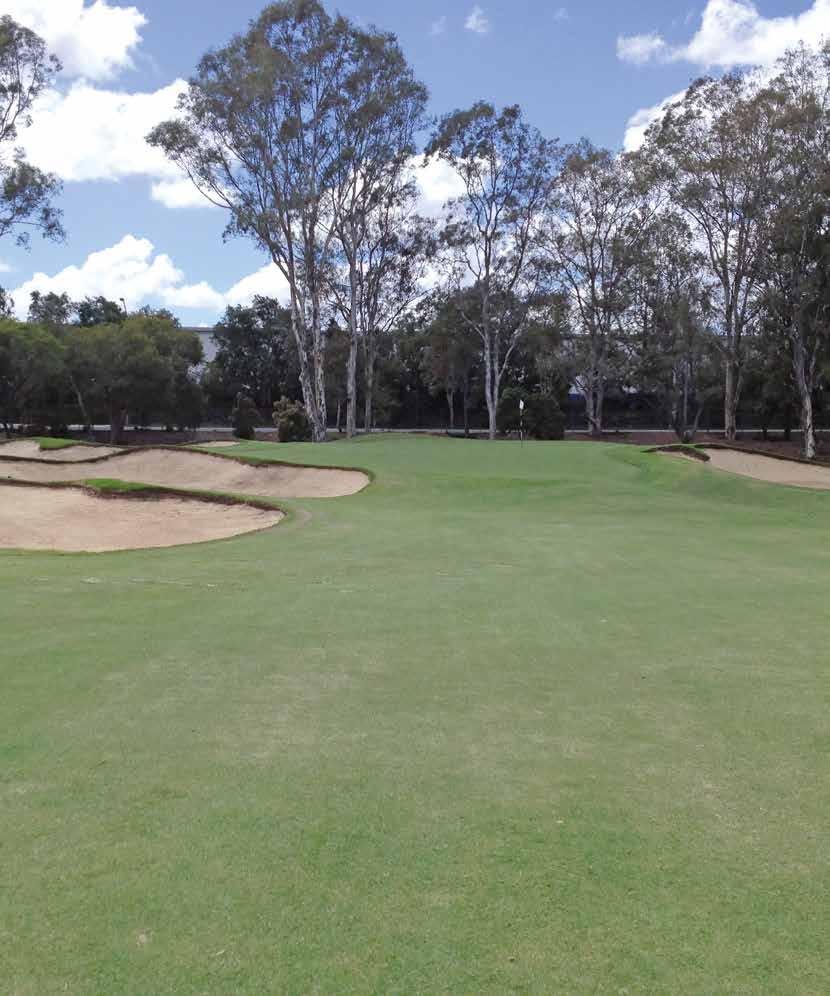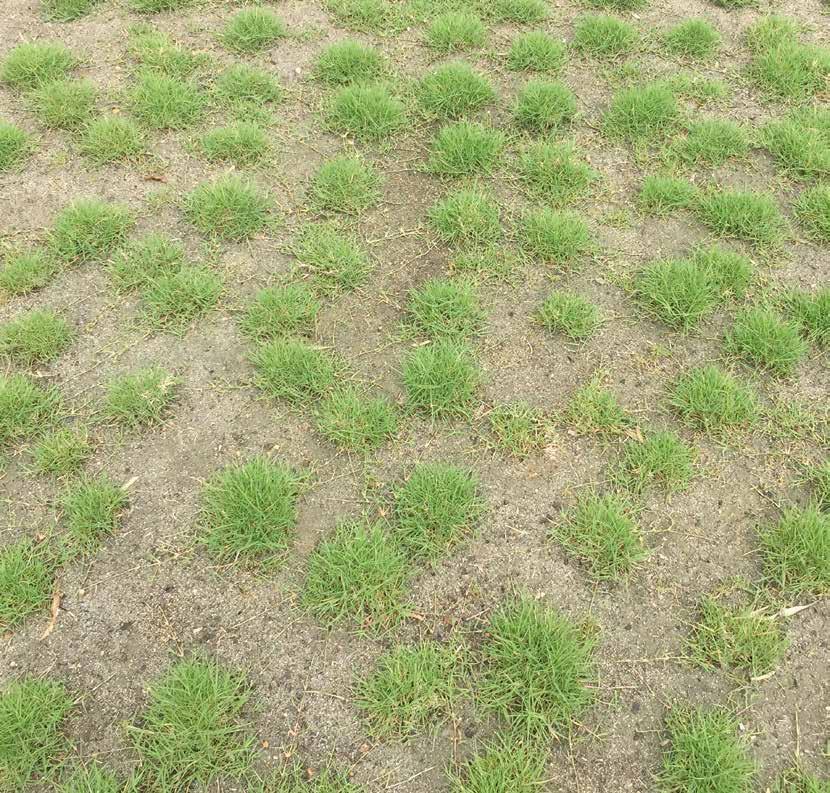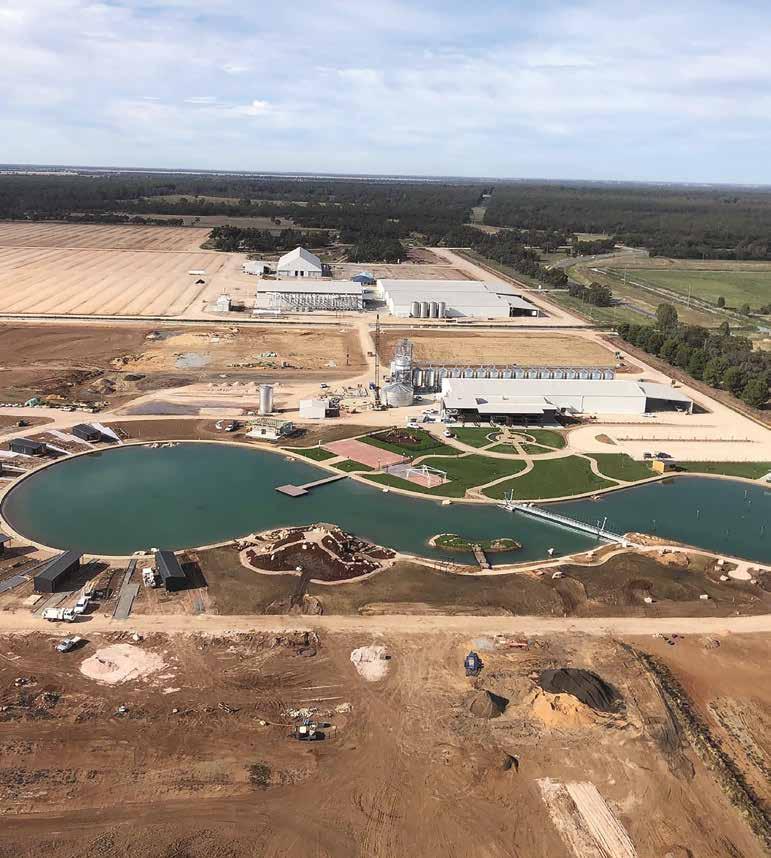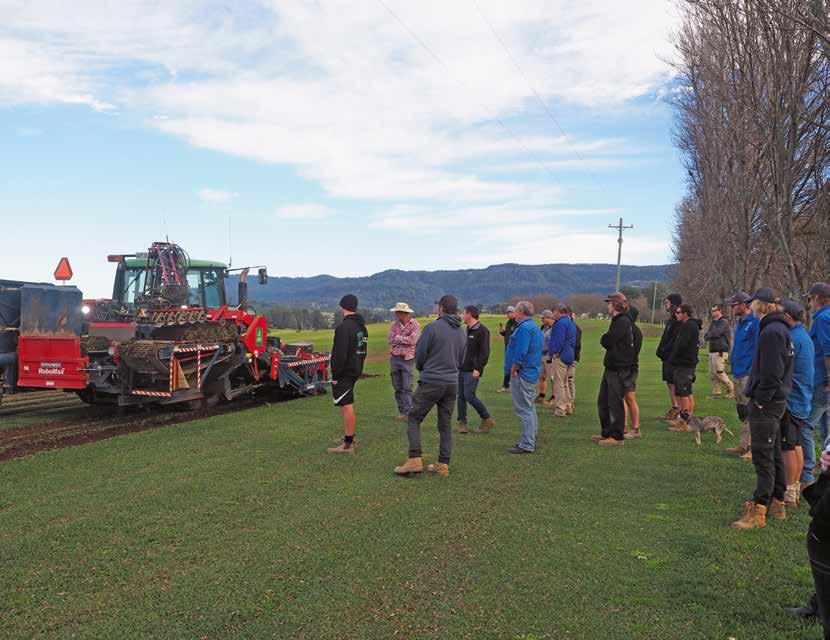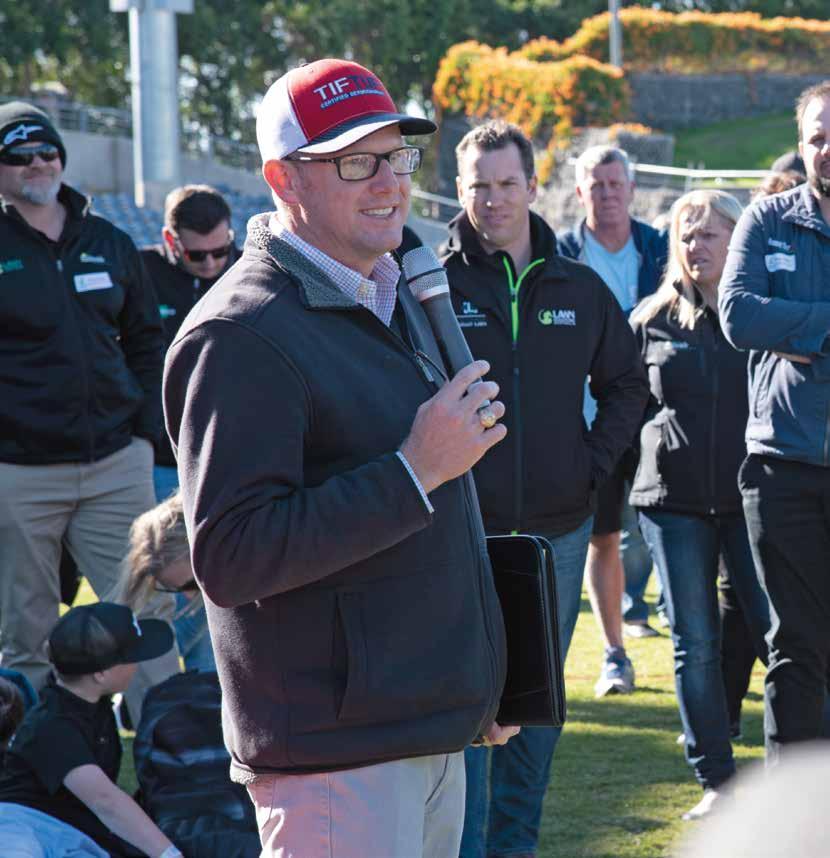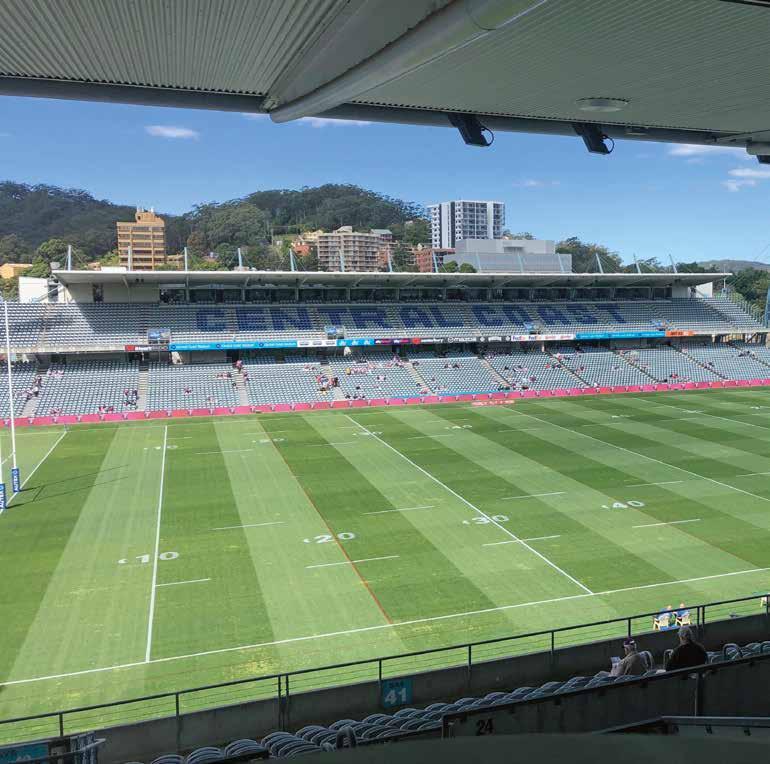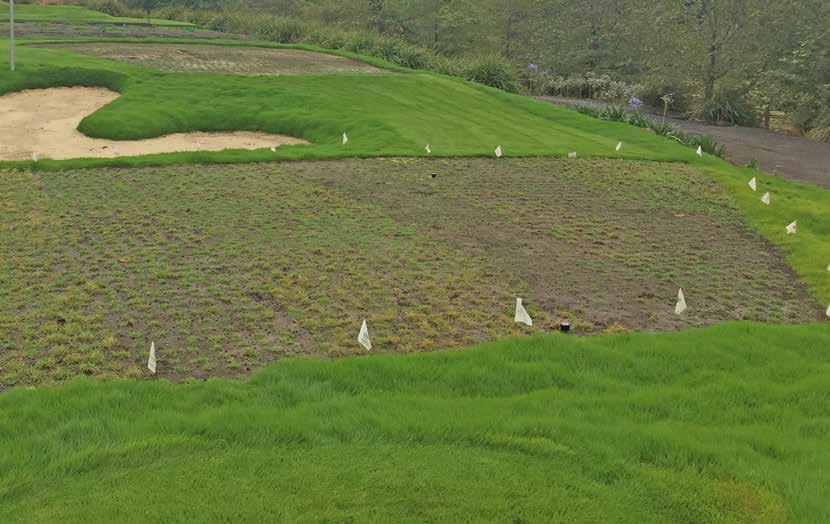
5 minute read
SPORTING SOLUTIONS FOR SCHOOLS
WITH LANDSCAPE SOLUTIONS
If you consider ground maintenance staff are busy at high profile venues such at the MCG, SCG, Adelaide Oval and the Gabba as they juggle different cricket and AFL season playing demands, spare a thought for the crews at many of the country’s leading private schools.
Advertisement
Not only do they prepare playing fields for different seasonal sports, but most schools have up to 10 or more fields on site each catering for multiple games played on each field every Saturday, plus weekday training sessions.
Given the high volume of fixtures and the associated turf wear and tear, particularly during the football season, there is little respite for the playing surfaces, and grounds maintenance crews are busy working around the clock to provide quality safe fields of play.
Leading Australian and New Zealand company, Landscape Solutions, believes outsourcing grounds maintenance is ideal for schools whose primary core business is delivering education.
Landscape Solutions reckons the upkeep of these fields to the highest standards involves teams of knowledgeable grounds staff, investment in the best machinery and products.
The company commenced operations in 1993 when owner, Tim Buckle, founded the business with little more than a ute, a shovel and a healthy desire to work hard and deliver results for his clients.
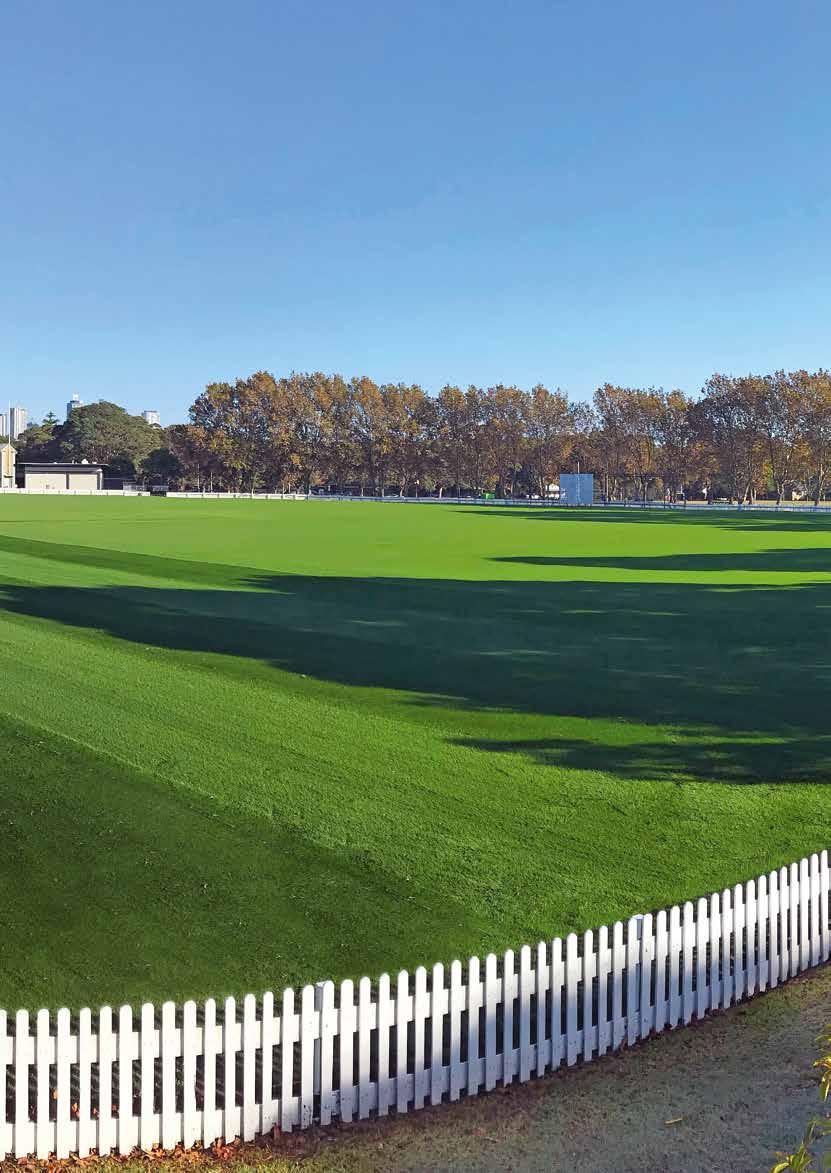
Now 27 years later, the company has offices in Sydney, Melbourne, Brisbane and Auckland and employs upwards of 600 fulltime staff, subcontractors and casual workers.
Landscape Solutions delivers comprehensive landscape services ranging from complex works such as civil and irrigation construction, through to landscape and sports fields maintenance.
It has also created a Golf Course Solutions division and now maintains seven golf courses in Sydney and Melbourne including the high traffic Moore Park Golf Course on the fringe of the Sydney CBD, plus the Belgravia Leisure managed Yarrambat Park Golf Course, north of Melbourne.
Landscape Solutions General Manager of Maintenance, Hamish Inglis, said outsourcing sports fields maintenance is economically smart and efficient.
“Because we are a large-scale business, we can purchase materials at prices better
than what individual schools and clubs can secure. This can improve their bottom line, and they can use these savings and invest in other projects,” explained Inglis.
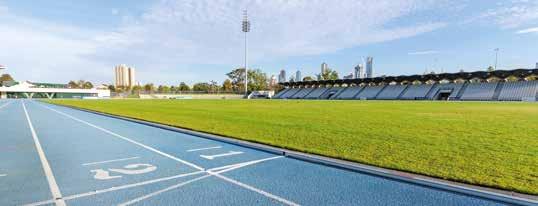
into the adjacent Brisbane River. “We also provide great flexibility. For
Solutions’ Site Manager. example, if machinery breaks down and requires repairs, we can immediately call in a replacement from within the business to ensure there is no interruption to maintenance programs,” he added.
“Machinery costs are solely borne by us, wickets. This salinity means that our grass sodium,” he added.
and not the client, so their cashflow and budgets are unaffected,” he added.
Two schools utilising Landscape Solutions services are leading GPS schools, located on Sydney’s lower north shore and in eastern Brisbane.
to the prestigious Brisbane school since 2012 and is responsible for 11 school sports fields and 26 turf wickets, plus three soccer pitches at the adjacent local football club. Despite delivering playing fields which are the envy of the GPS competition, it does come with complications as the fields are bounded by Norman Creek, which flows
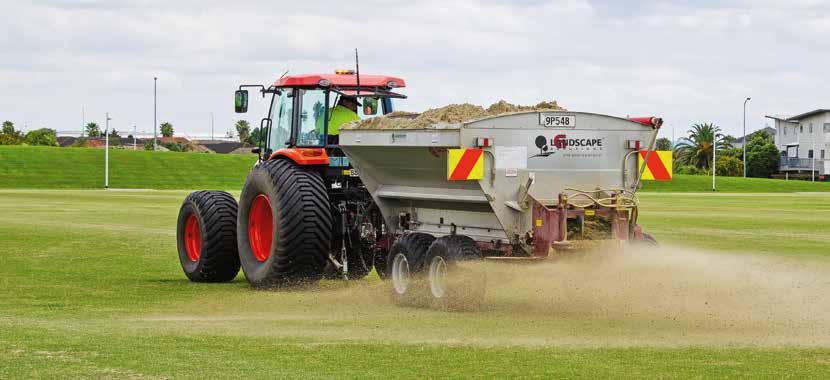
“We have many challenges with our soil and turf mainly because the fields are on a flood plain. We are surrounded by Norman Creek. It is a tidal saltwater creek surrounded by mangroves,” said Martyn Hedley, Landscape
“It (the creek) regularly floods leaving salt deposits behind on our fields and is constantly under stress. We continually conduct soil testing to measure the soil chemistry. Getting pH levels right – that’s the big key and of course removing the Landscape Solutions has been contracted
“In the cricket season we flush the wickets with a sodium flush. But it’s (cricket surface) a heavy clay and it doesn’t leach readily, so it hard to remove unwanted nutrients.
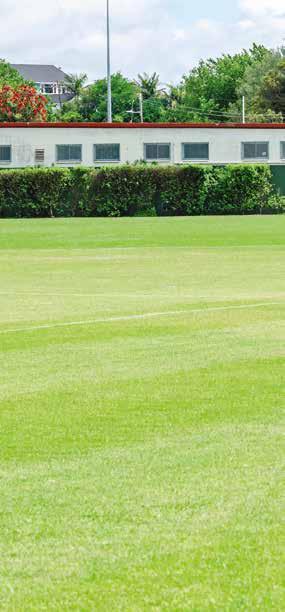
We regularly aerate the outfield and apply plenty of gypsum to remove the sodium, but you can’t put gypsum on a turf wicket.”
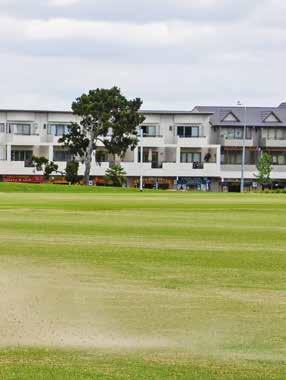
The Brisbane summer humidity also presents challenges, said Hedley.
“Fungal diseases are quite prevalent. One big issue though is couch mite and that seems to be getting worse each year,” he said.
“It turns it (the turf) into almost a bonsai grass. It feeds and injects a toxin at each node forming what we call a witches broom. Once treated, recovery is extremely slow,” added Hedley.
Hedley says he oversows the main playing field with rye grass each winter but added the Queensland climate is making it more difficult to keep the rye grass in.
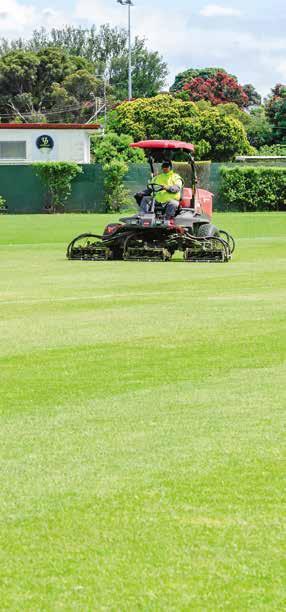
“The winters seem to be getting warmer and shorter. I could get away without oversowing, but the school likes it because it gives a darker look in winter and stripes up. It’s more of a visual thing really in Brisbane, not a necessity,” he said.
Landscape Solutions has been managing the Sydney GPS school playing fields located on Sydney’s lower north shore, since 2015, where the team is responsible for nine Santa Anna couch playing fields
The staff use the school Christmas-New Year school holiday break to undertake its annual major renovation works before the resumption of the GPS cricket season. “We have a 4-5 week window where we conduct major re-levelling, laser level turf wickets, re-level impacted soil, attend to irrigation and drainage systems, scarify the
plus 23 turf wickets. surface and apply a light top dressing of the fields,” said Nick Saunders, Landscape Solutions’ General Manager of Operations, Maintenance.
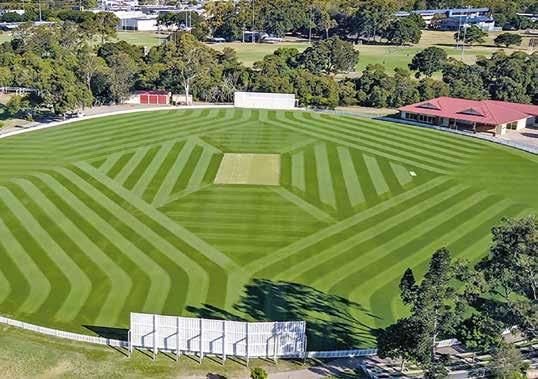
Saunders said there was only a seven-day window to prepare its fields for the current summer cricket season as the rugby and football seasons were deferred because of the suspension of play following the outbreak of COVID-19.
“We performed some 250mm earth quaking and hollow tining to aerate the soil with minimal disruption to the playing surface,” said Saunders.
The playing fields are also well irrigated thanks to a three megalitre water storage and harvesting tank which was purpose built several years ago and located beneath the newly laid tennis courts.
Saunders also undertakes regular soil testing analysis and takes great pride in ensuring each field is specifically prepared for each individual sport.
“We cut the cricket outfield to a level of 12mms while the rugby and football fields are cut to 28mms and 25mms,” he said.
“We also take a lot of pride in our turf wickets. There is an art to it. We want to ensure a good batting wicket while there is still something there for the bowlers,” said Saunders.


